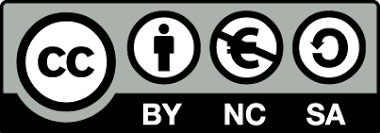Abstract
Objective: To assess the cost-utility, budget impact, and feasibility of liver function diagnosis by
measurement of Indocyanine green (ICG) level adding to standard diagnosis compared with
standard diagnosis alone.
Methods: To assess the cost-utility analysis, a hybrid model between decision tree and Markov
model was used to compare ICG intervention and standard diagnosis in patients undergoing first
major hepatectomy, considering the societal perspective. Input parameters (transitional
probabilities, costs, and utilities) were obtained from several sources such as primary data
collection from hospitals, e-Claim database from National Health Security Office, and literature
review. All costs and outcomes were discounted at an annual rate of 3%. Incremental costeffectiveness ratio (ICER) was estimated. A variety of sensitivity analyses were also performed.
Budget impact analysis was also conducted based on the data from cost-utility analysis and
literature review. The uptake rate of ICG was 60% in the first year and increased 10% in the
subsequent year. The budget was estimated for a new scenario (ICG use) and a current scenario
(No ICG use). The net budget impact was calculated. One-way sensitivity analysis was also
performed. The Feasibility test was conducted by in-depth interviewing surgeons and nurses.
Several issues, patterns of healthcare services, resource management were prior set up for
interview.
Results: Adding ICG to standard diagnosis incurred an additional total lifetime cost of 3,600 THB,
with incremental gains of 0.003 life-years and 0.001 QALYs. This yielded ICER of 1,073,794 THB per
life-year and 2,763,973 THB per QALY. Probabilistic sensitivity analysis (PSA) indicated that adding
ICG to standard diagnosis had a 6.3% probability of being cost-effective at a willingness-to-pay
(WTP) of 160,000 THB per QALY. When the probability of post hepatectomy liver failure (PHLF)
increased to 10.1%, the base-case ICER declined to 160,000 THB per QALY. Similarly, if the unit
cost of ICG decreased by 88%, the ICER would also equal 160,000 THB per QALY. The base-case
results of the budget impact analysis showed that the total 5-year NBI was approximately 40
million THB with an average annual impact of 8 million THB per year. The cost of ICG and
diagnostic procedures was the major contributor to the overall cost. The 5-year NBI for the high
risk of group of PHLF was 11.5 million THB with an average annual of 2.3 million THB. The results
of the feasibility study showed that patients received ICG injections in the outpatient department,
and no additional devices were required for the procedure. On average, liver surgical outpatient
clinics were held 1-2 days per week, with 4-5 patients per day receiving ICG injections. Patients
covered by the Universal Health Coverage scheme had to pay out of pocket for ICG.
Conclusion: Liver function assessment using ICG measurement in addition to standard diagnosis
was not considered as a cost-effective strategy. However, it should be considered for inclusion in
the benefit package due to its potential to reduce the incidence of PHLF, thereby lowering the
associated treatment costs. Moreover, the intervention demonstrated a low NBI, with an average
of 8 million THB per year.


